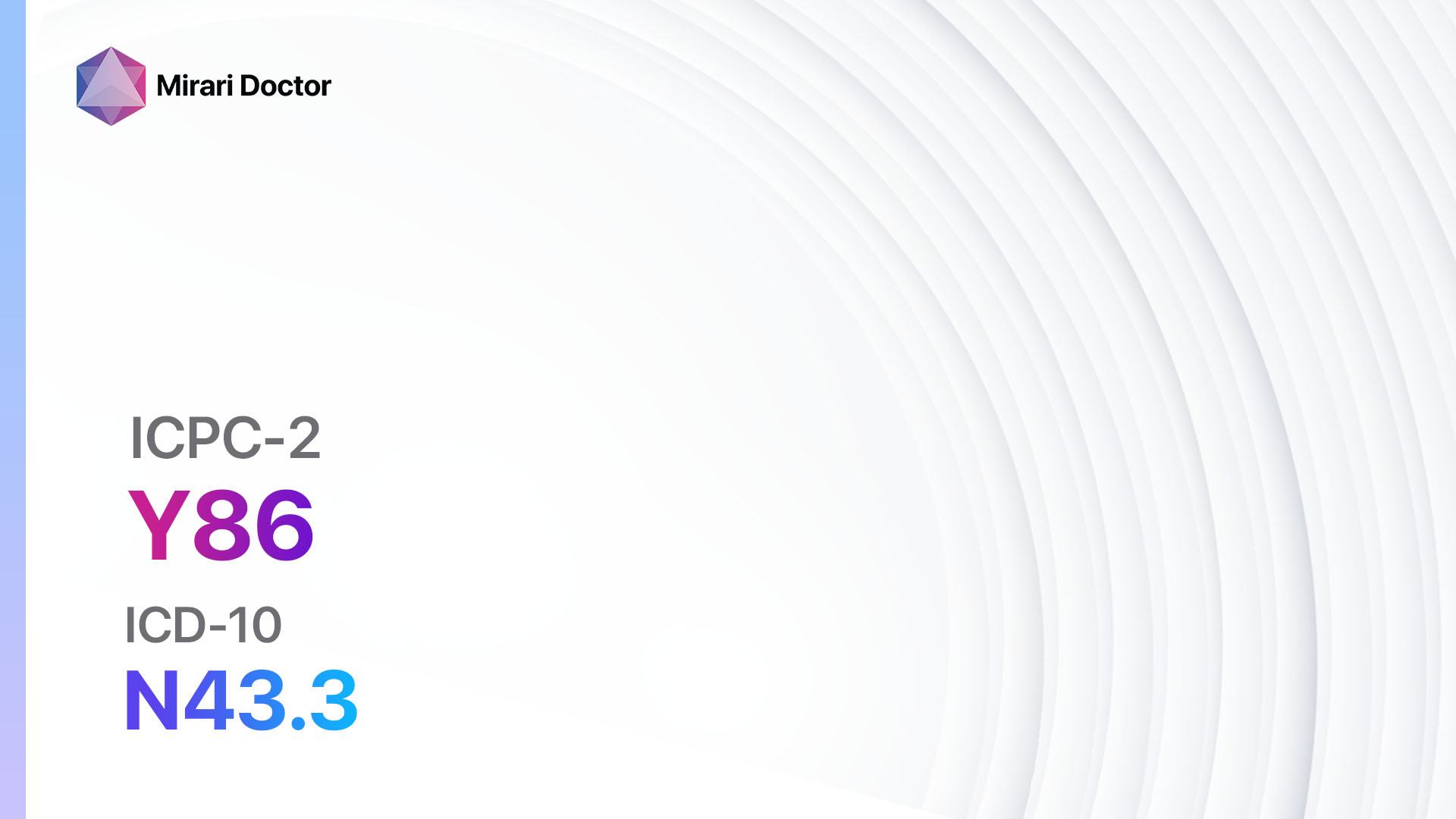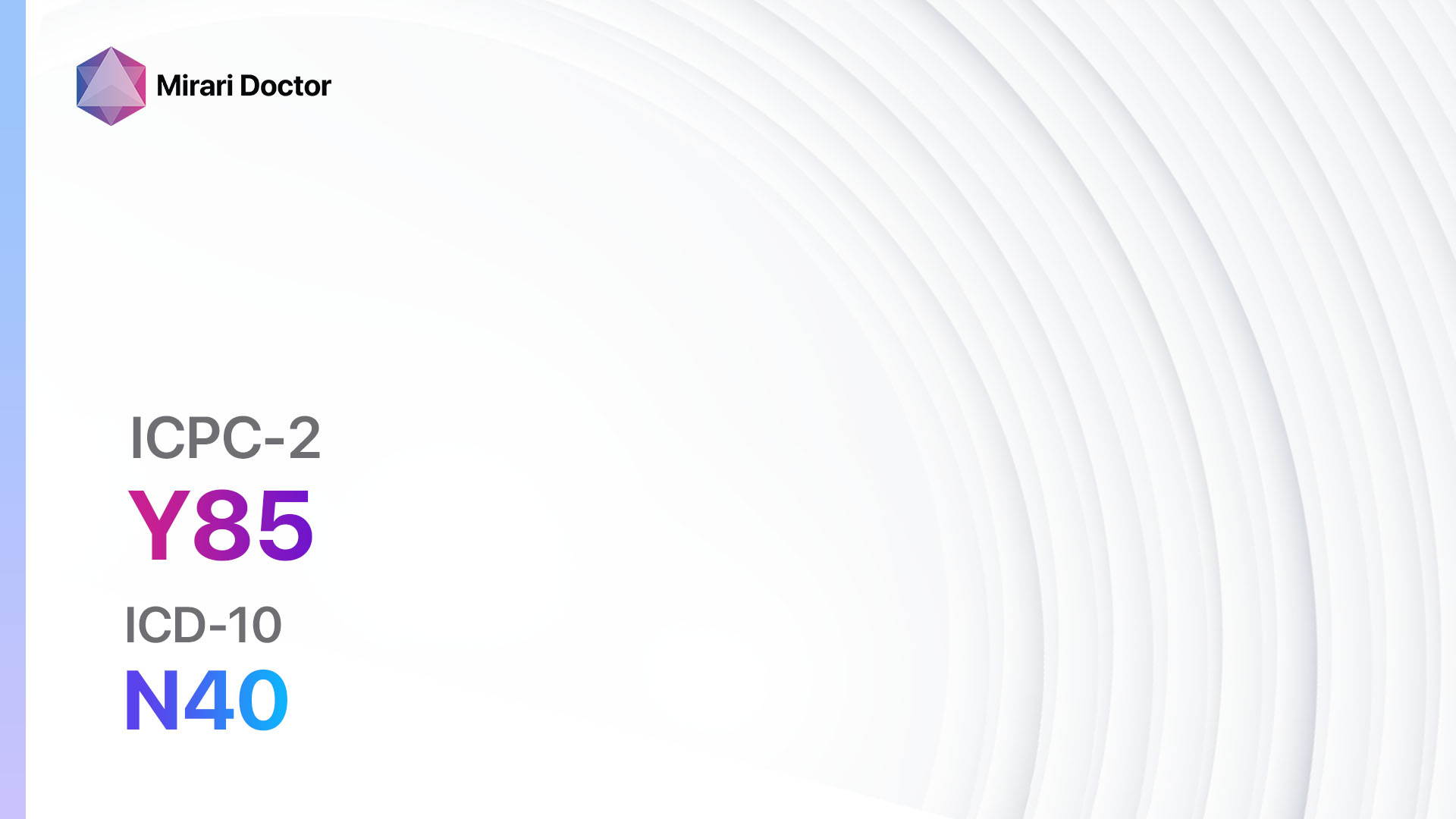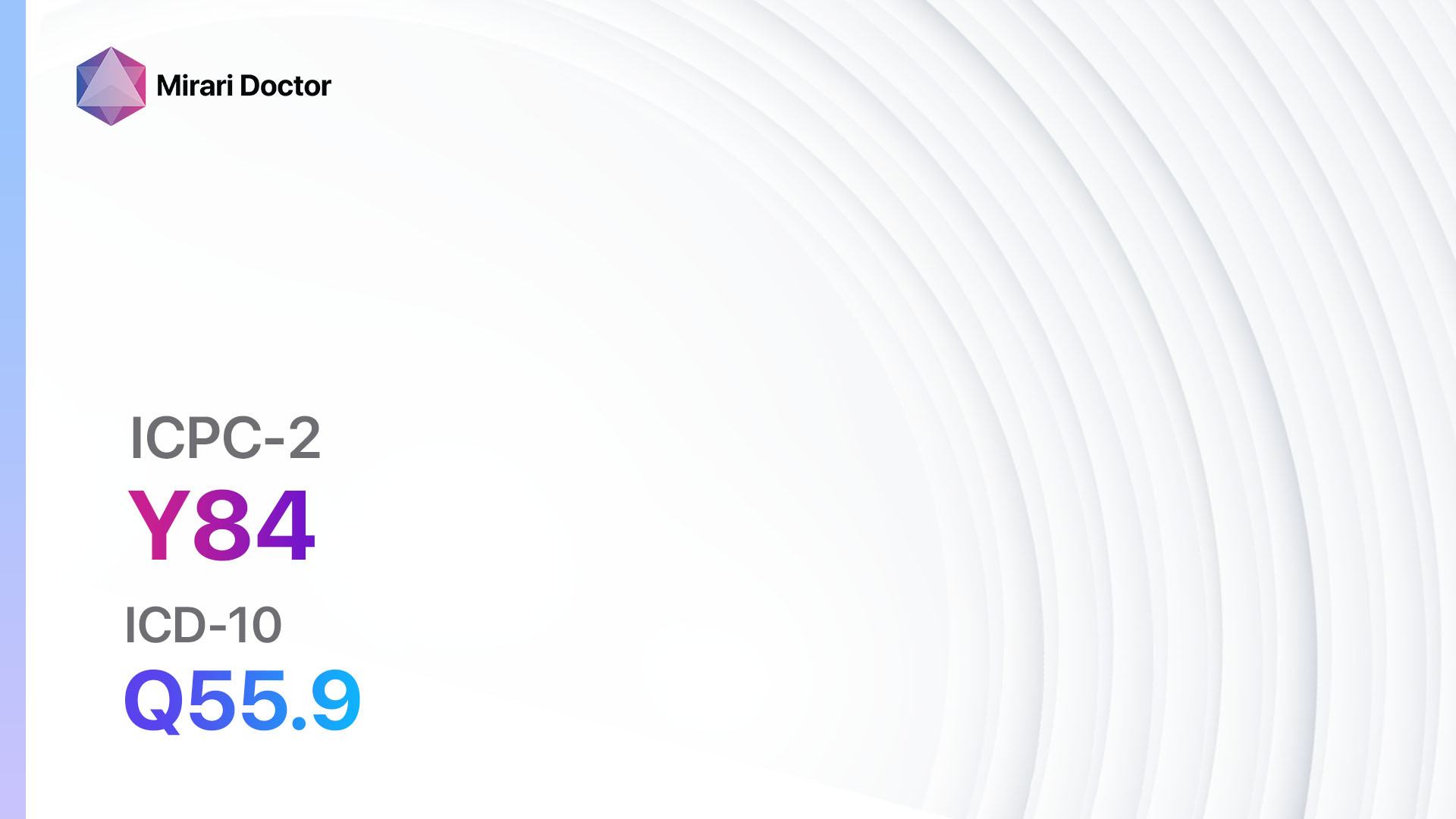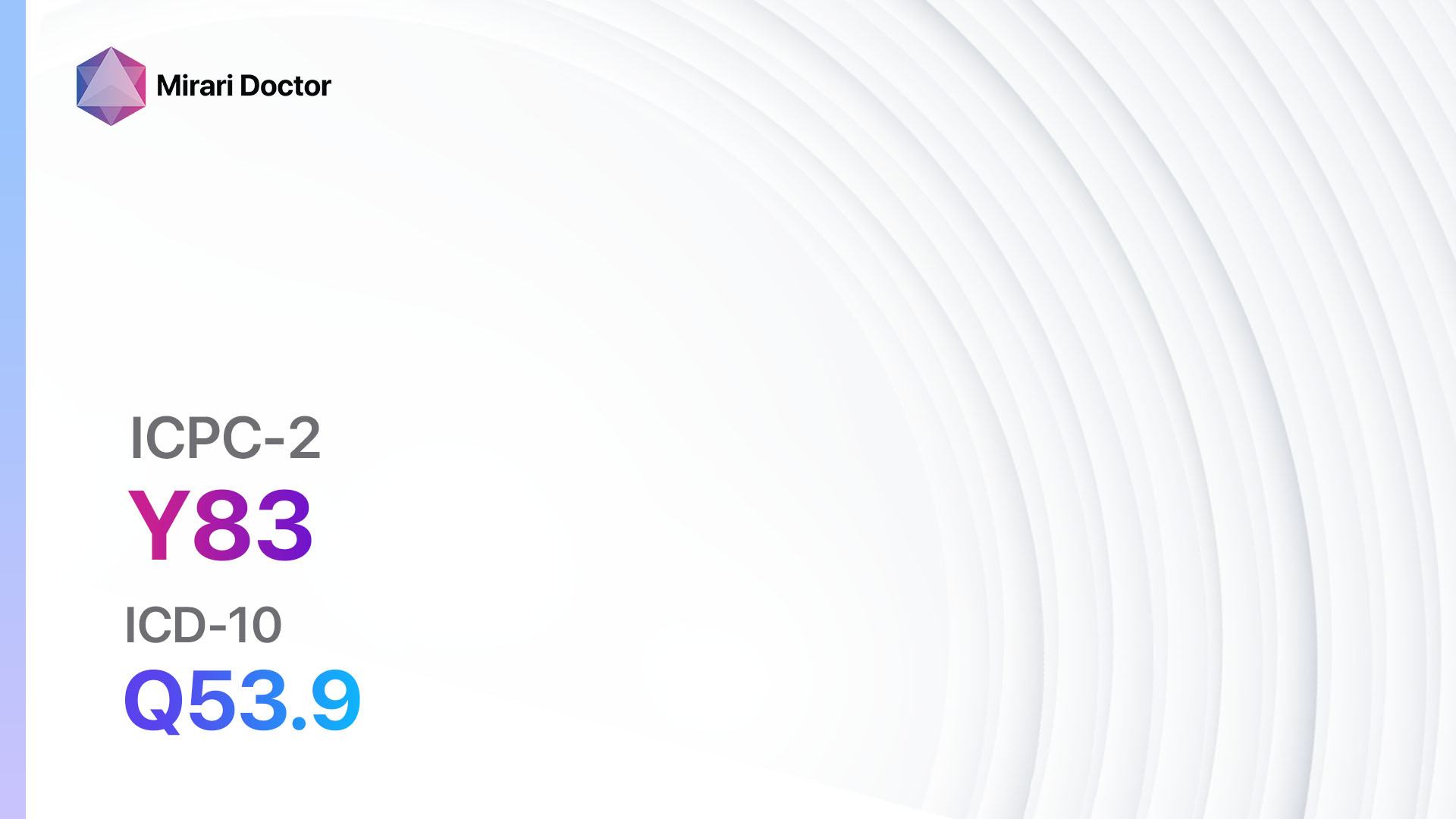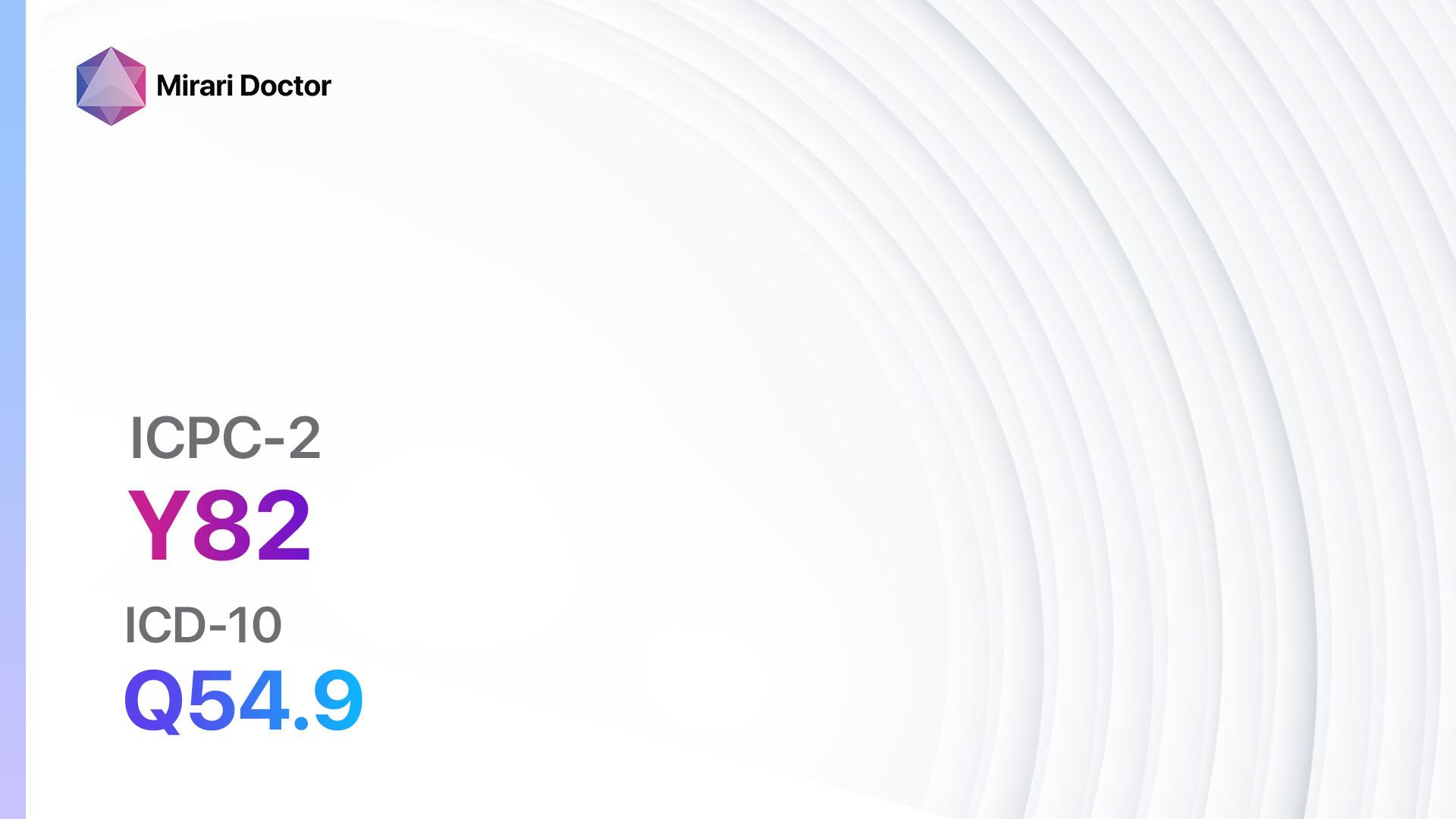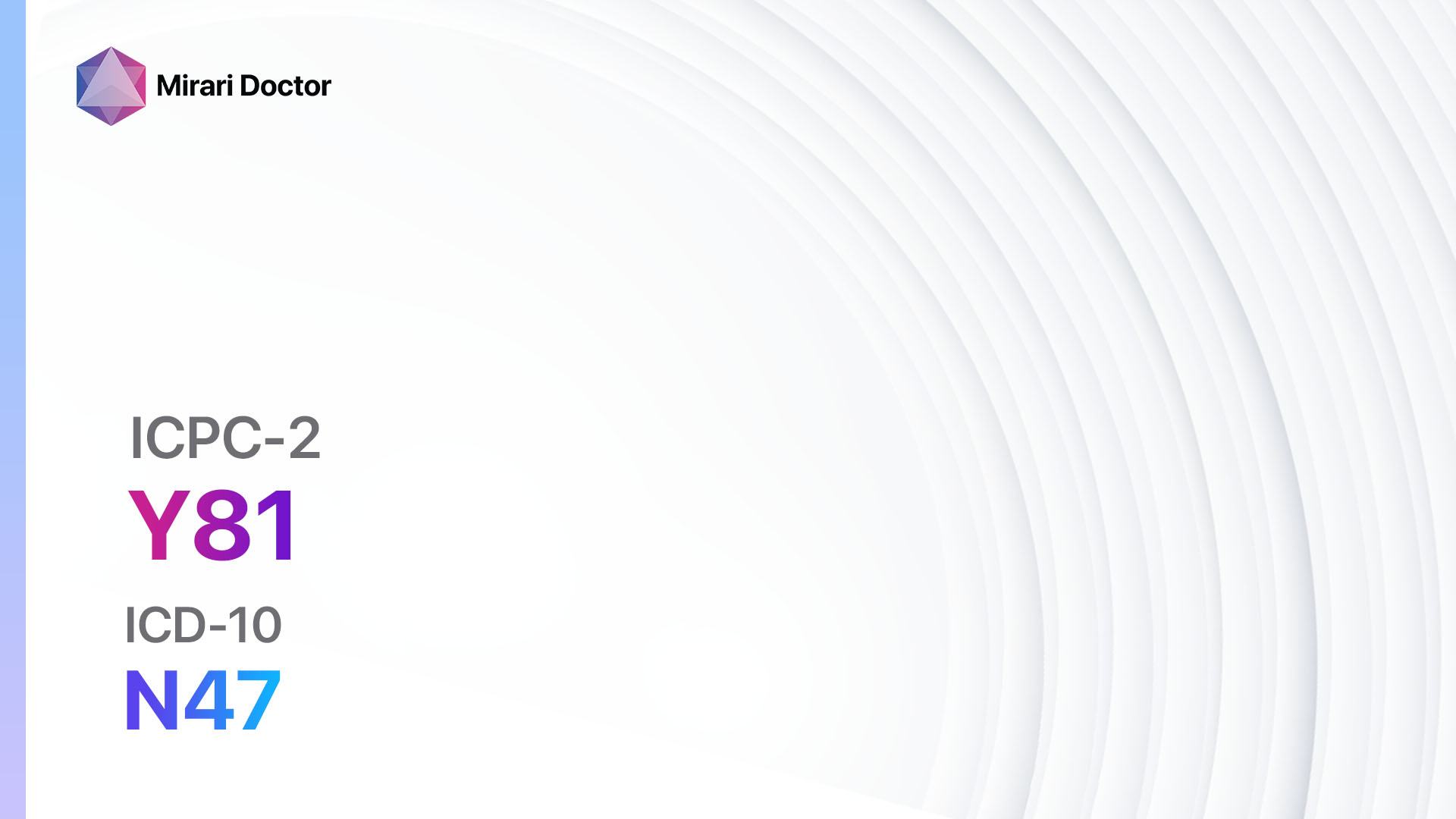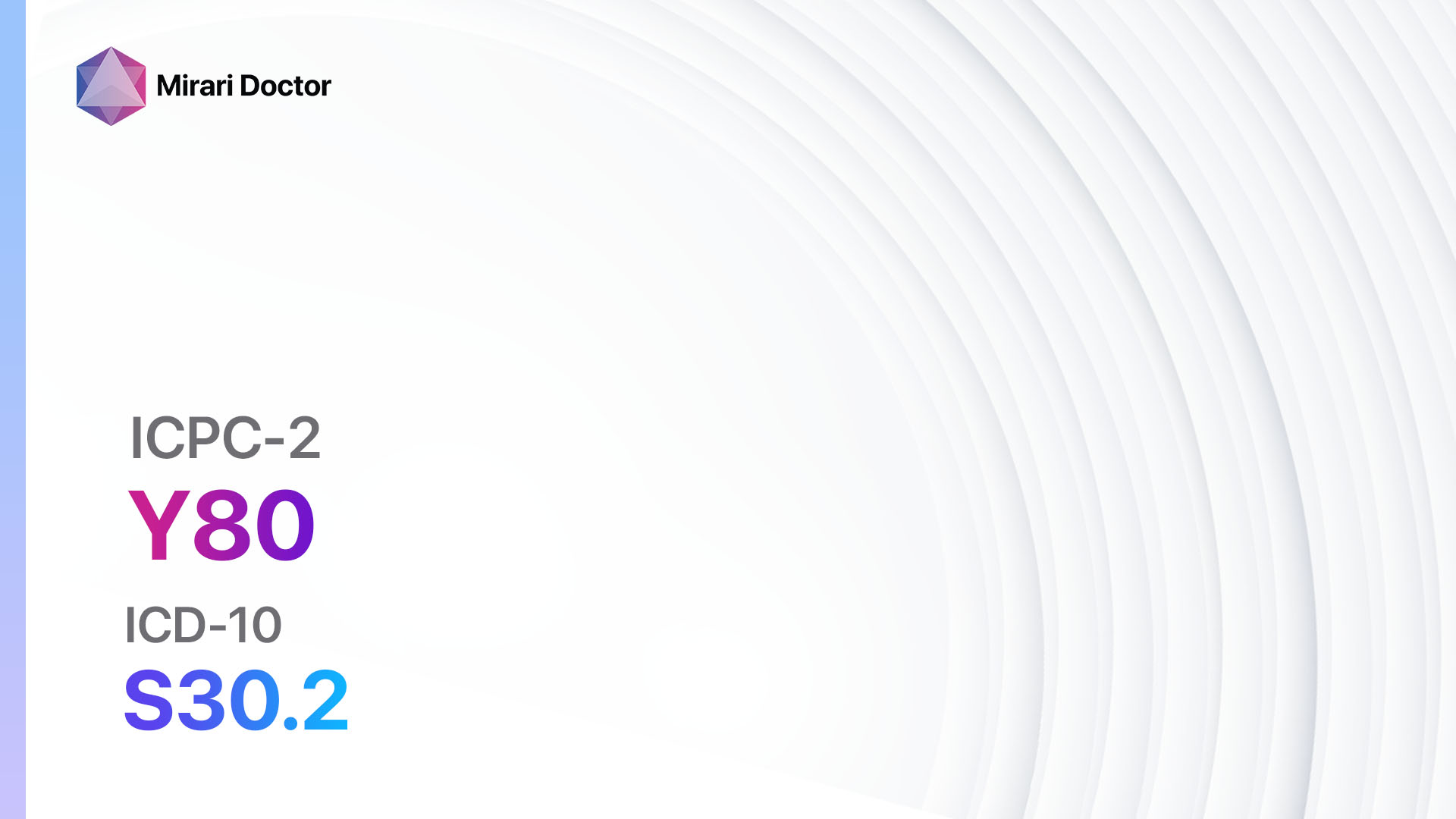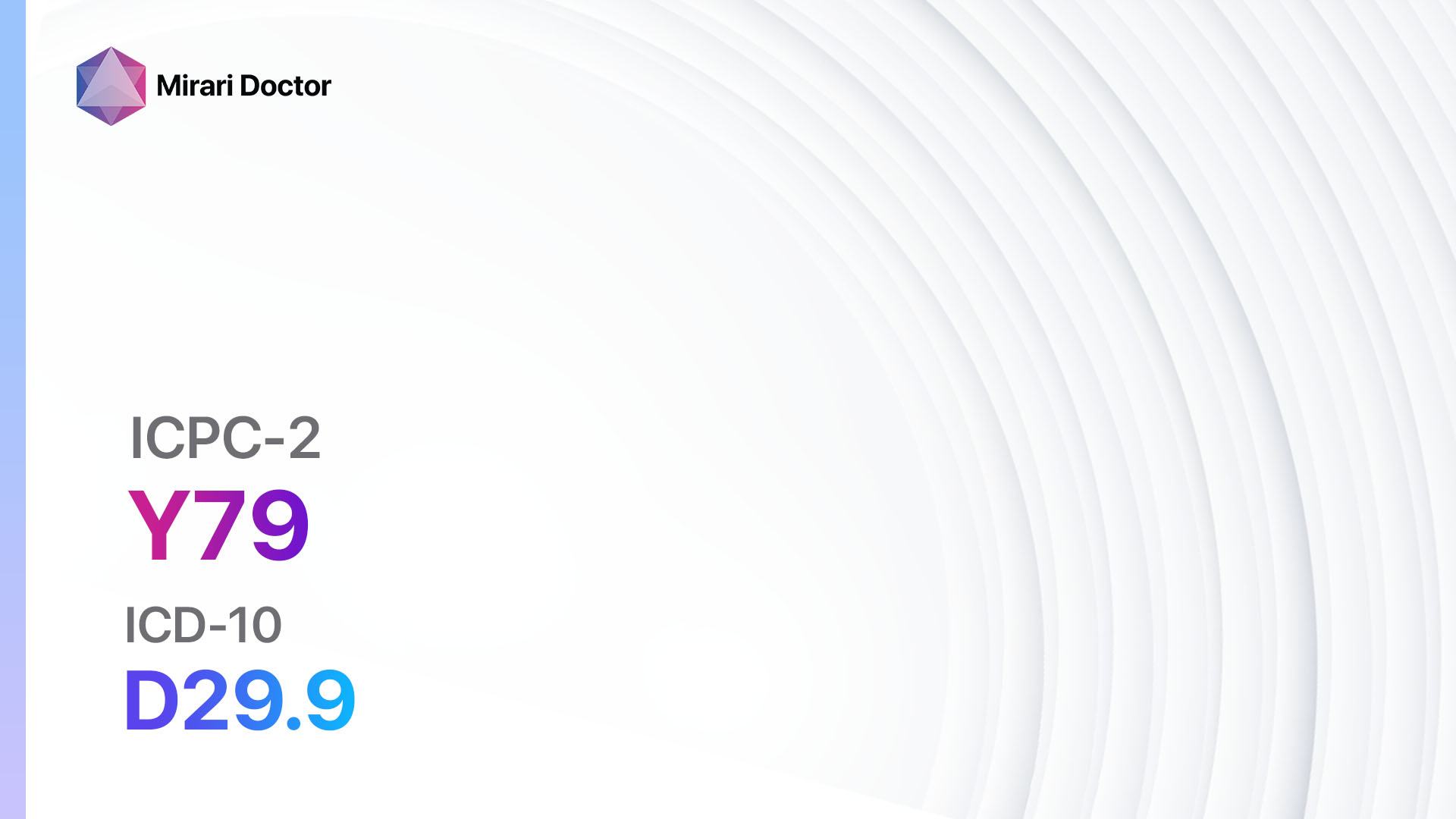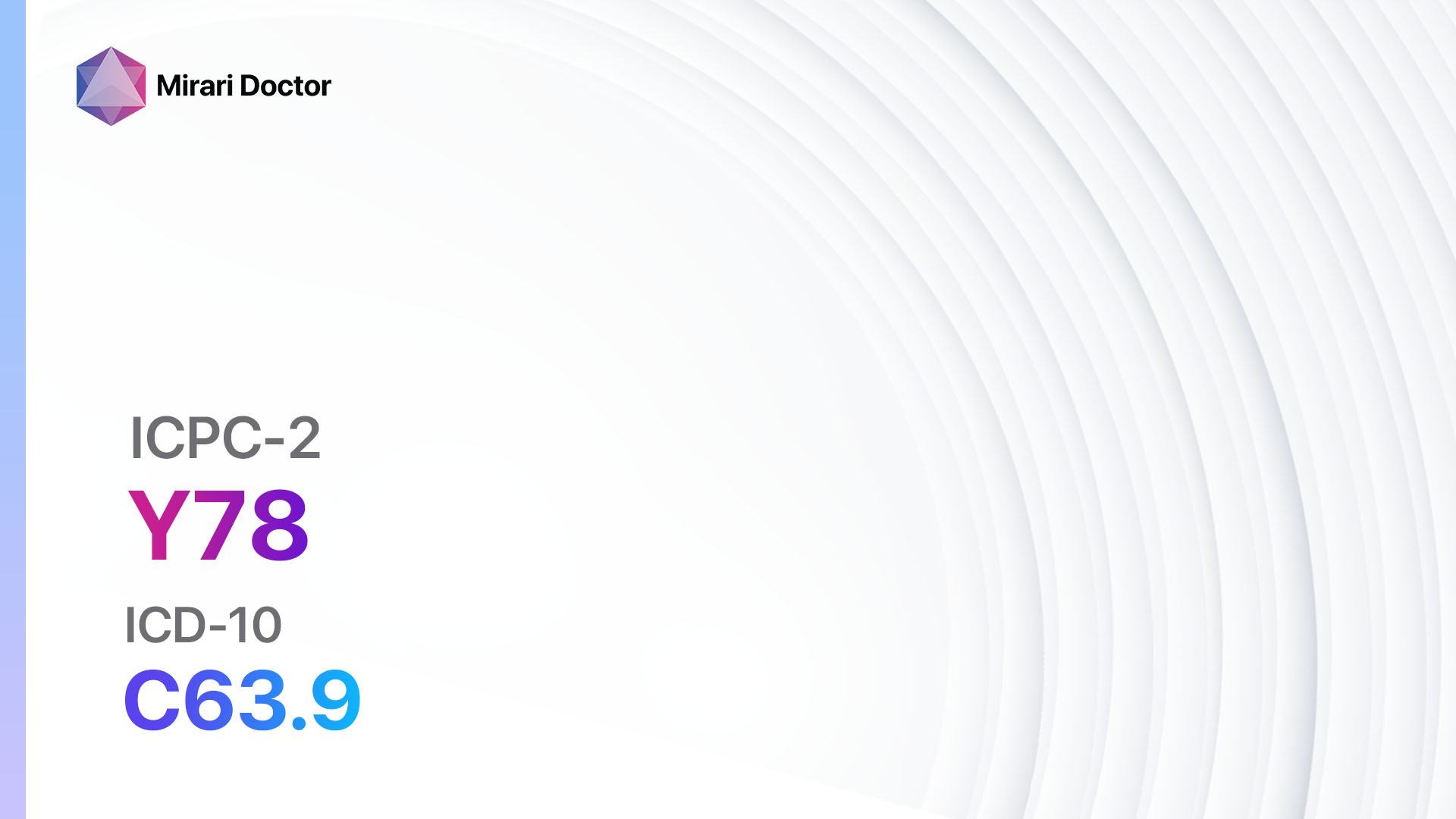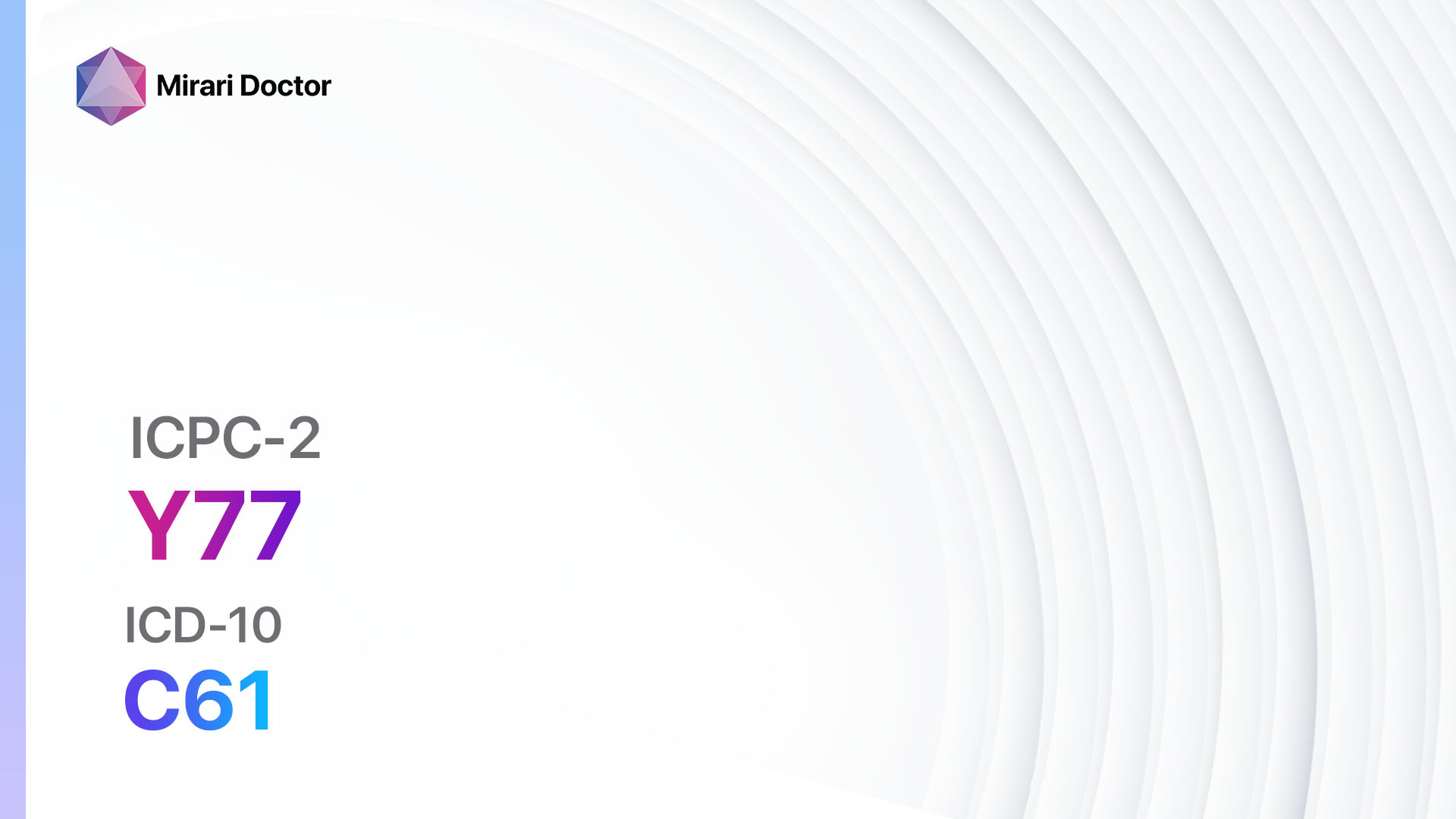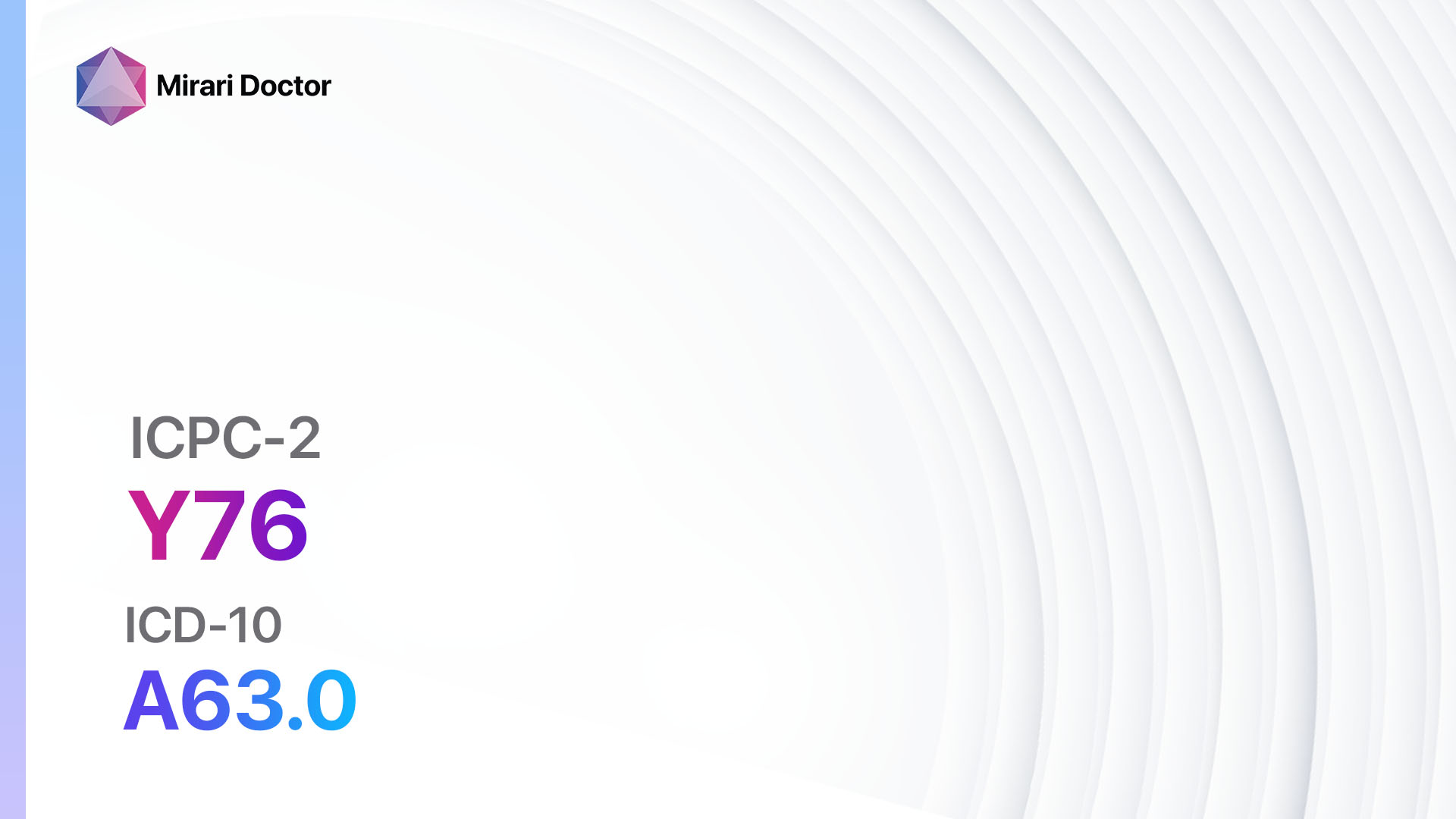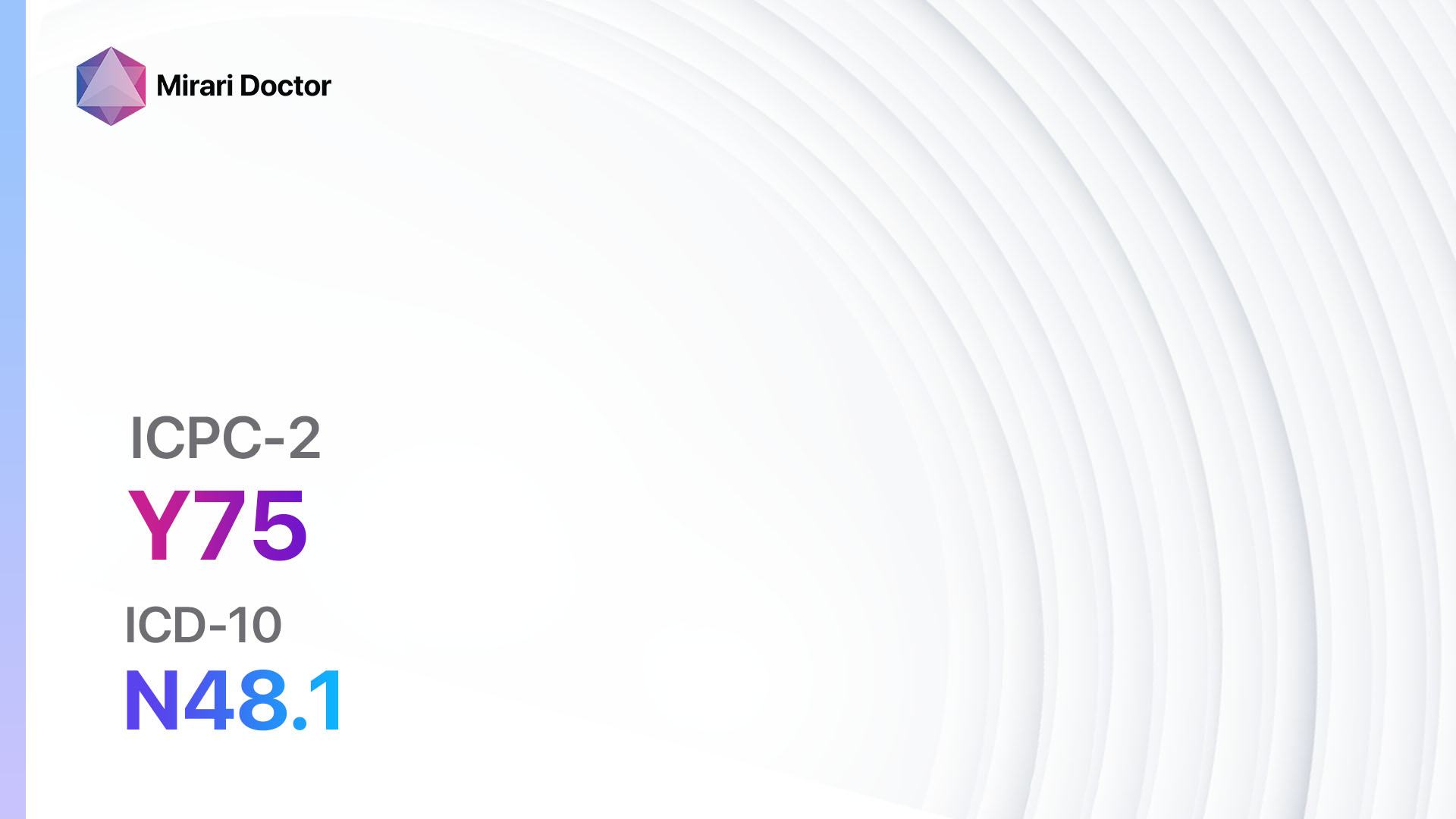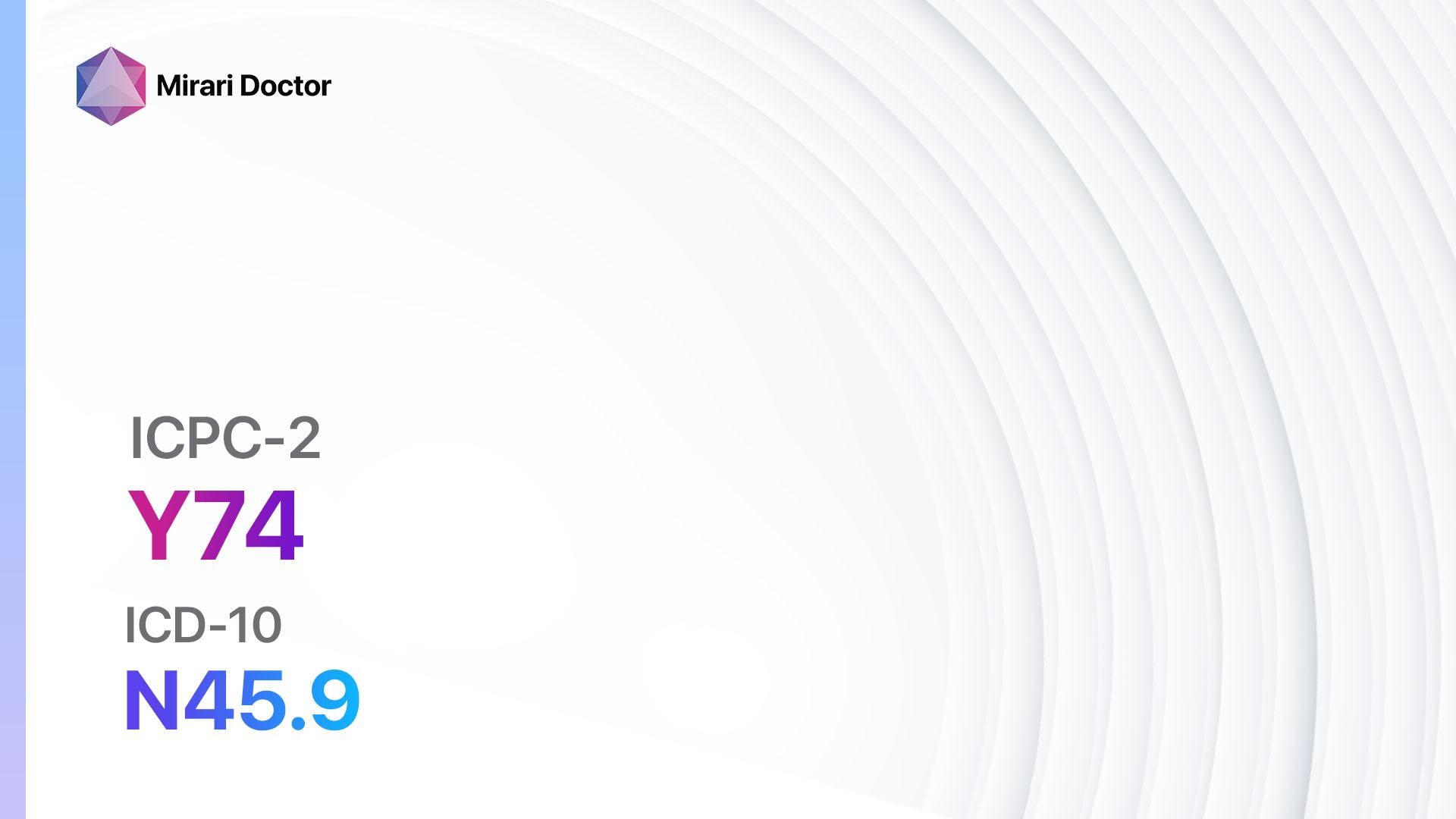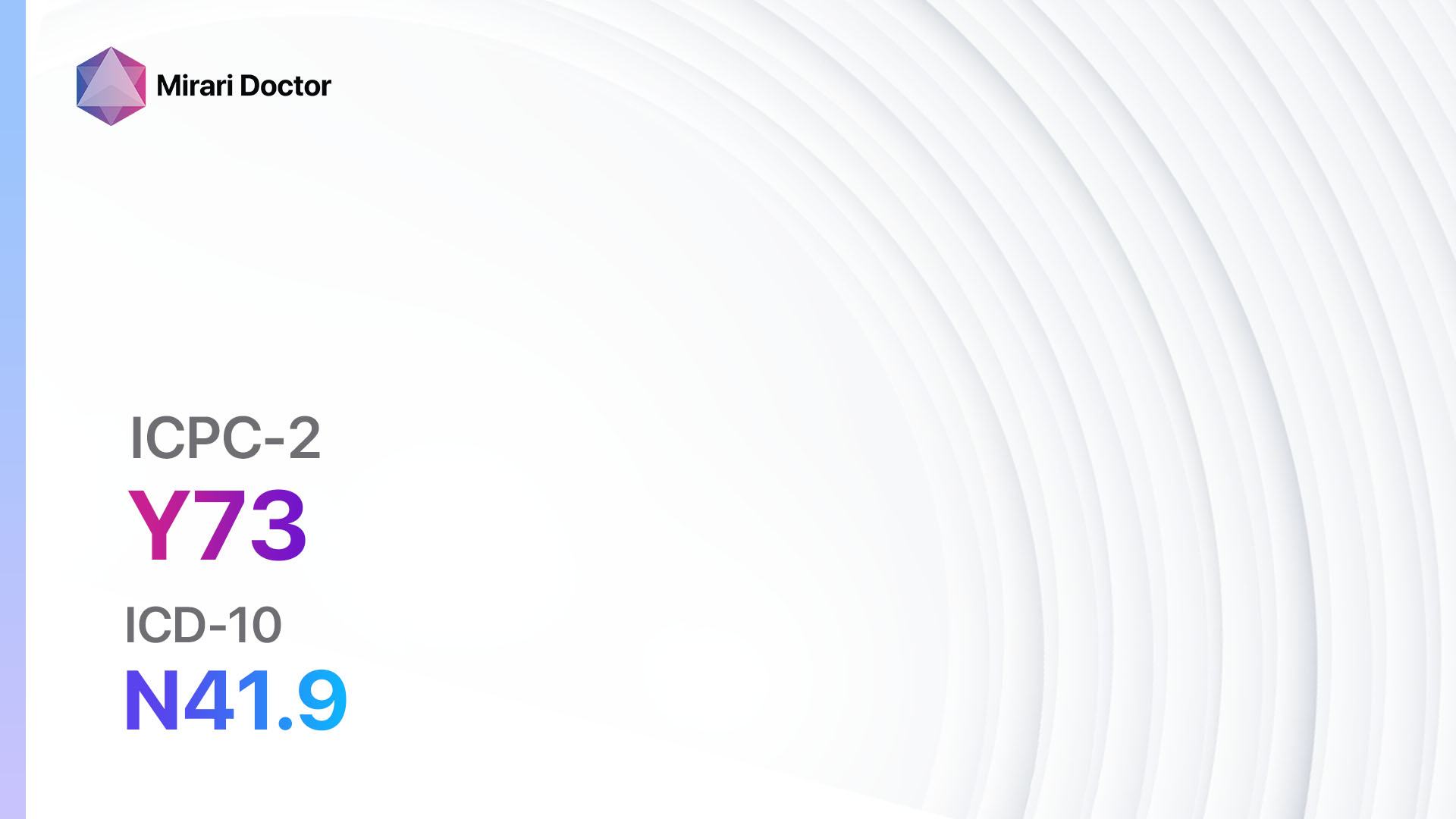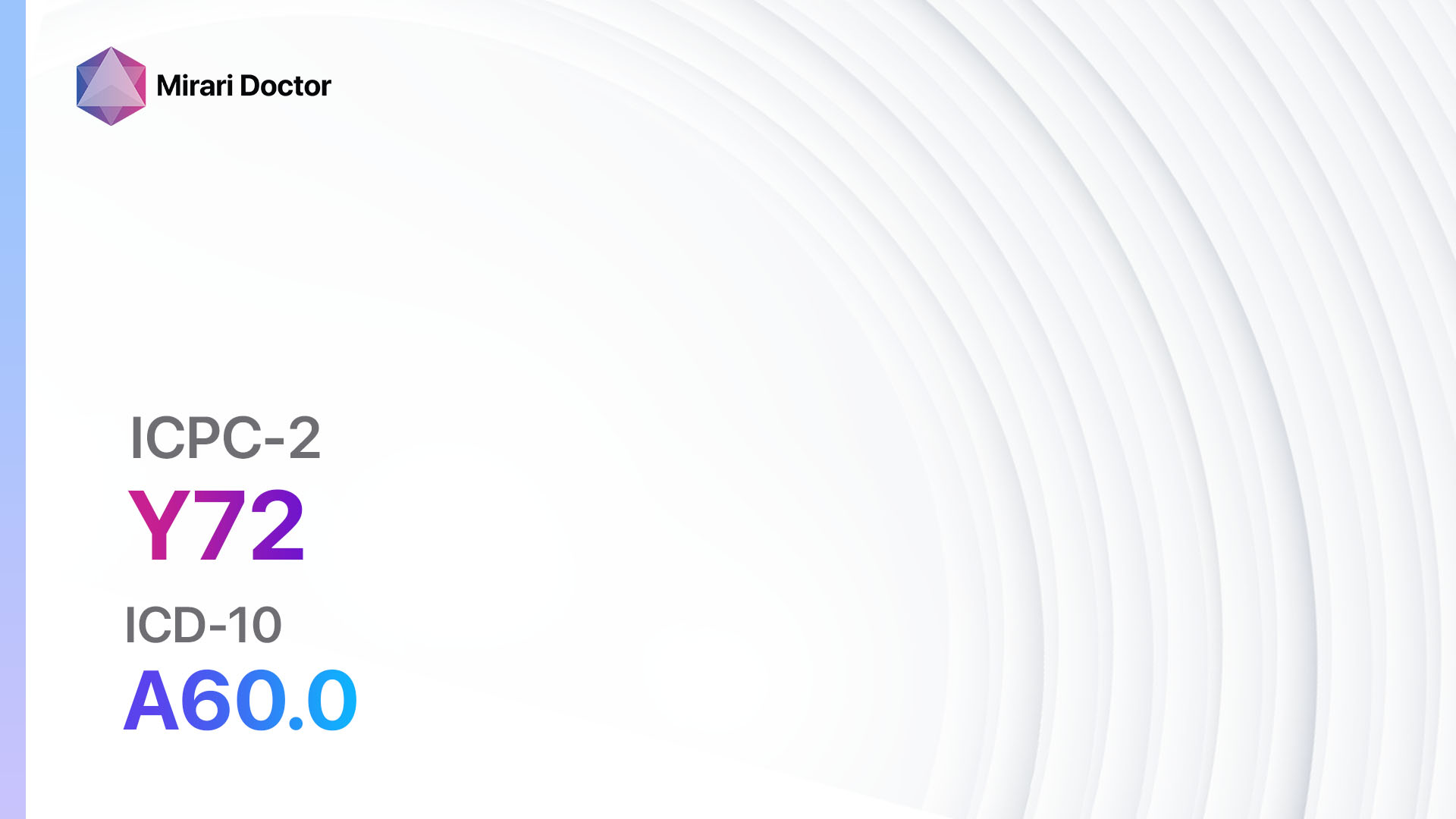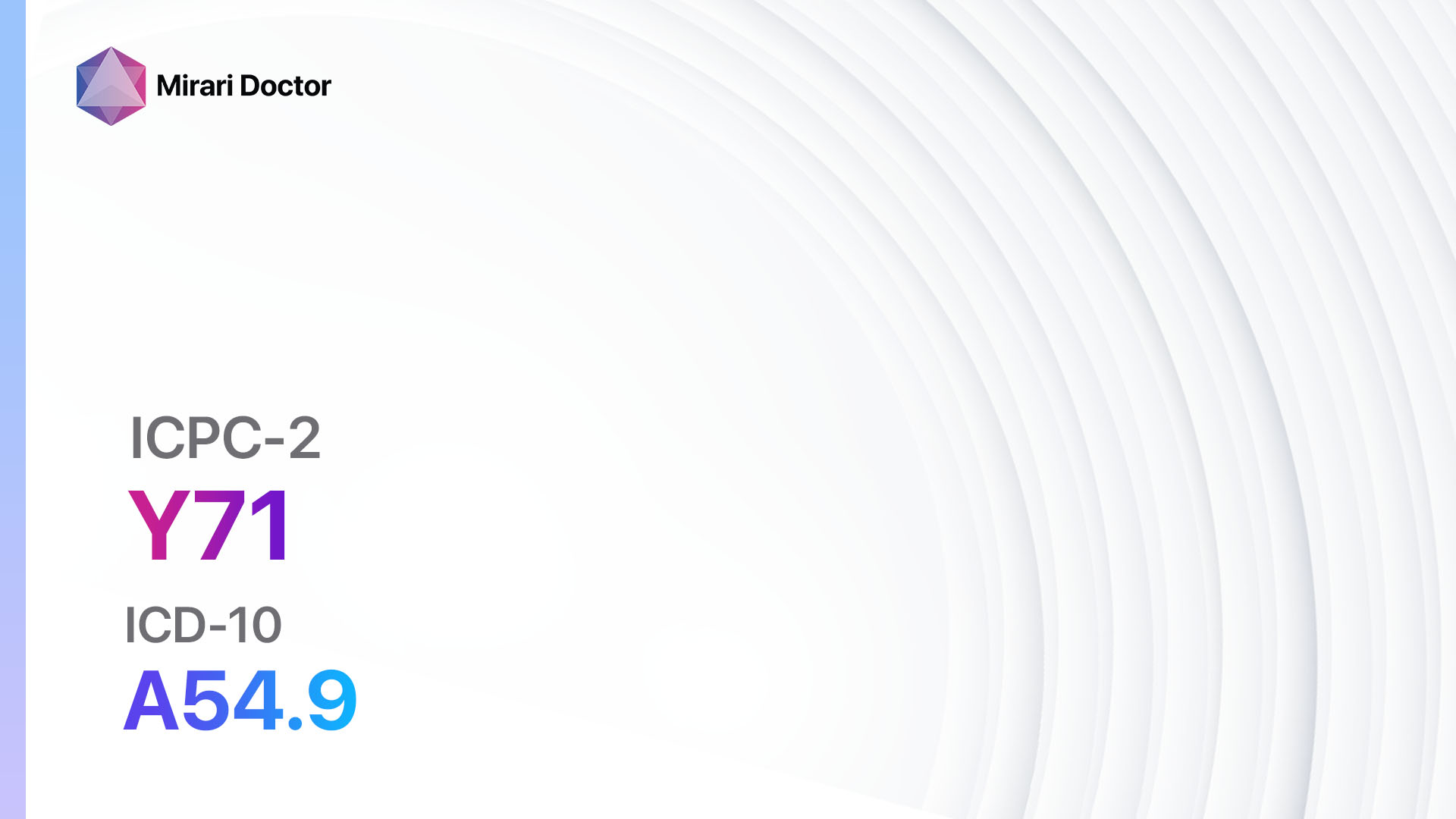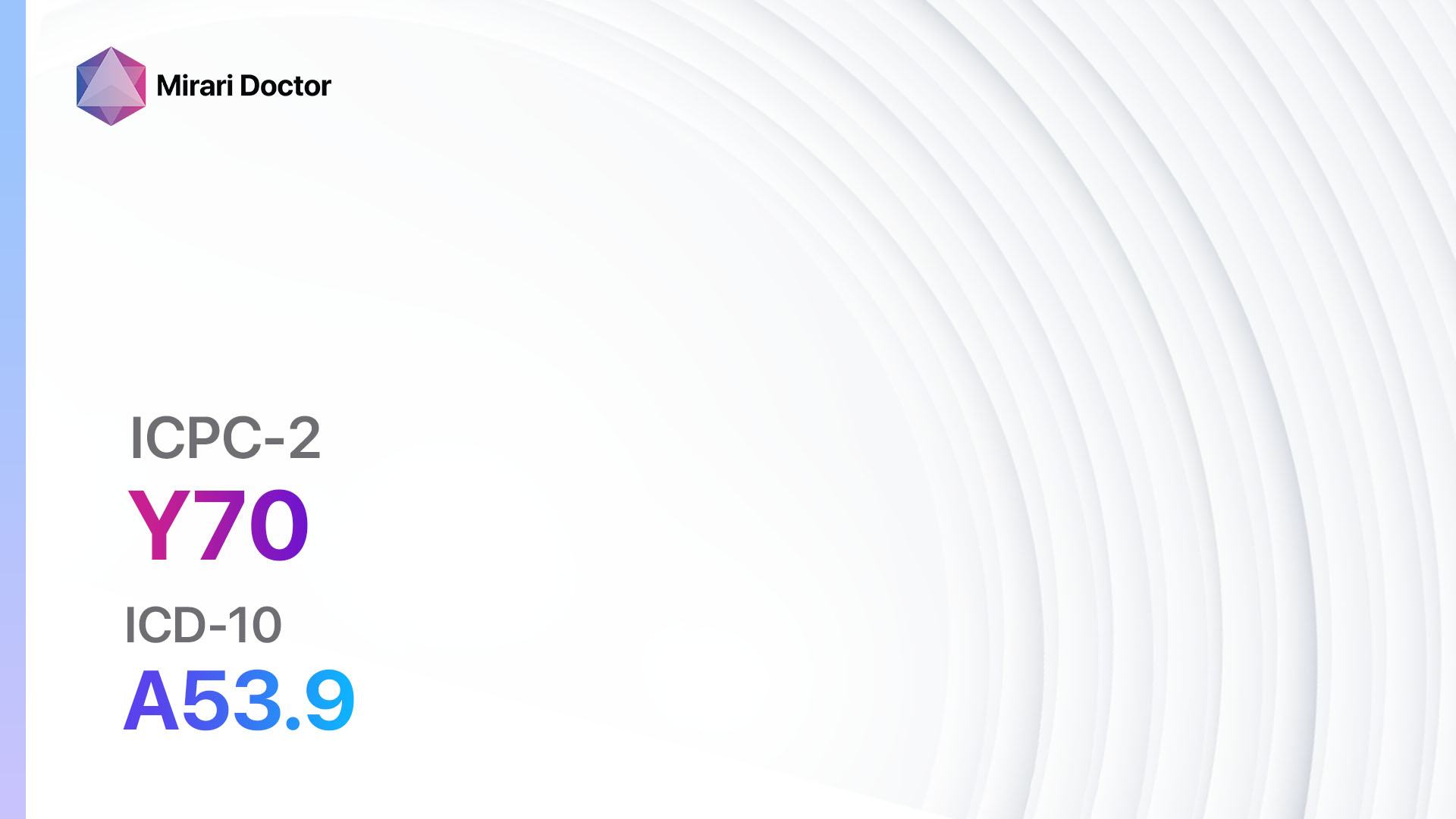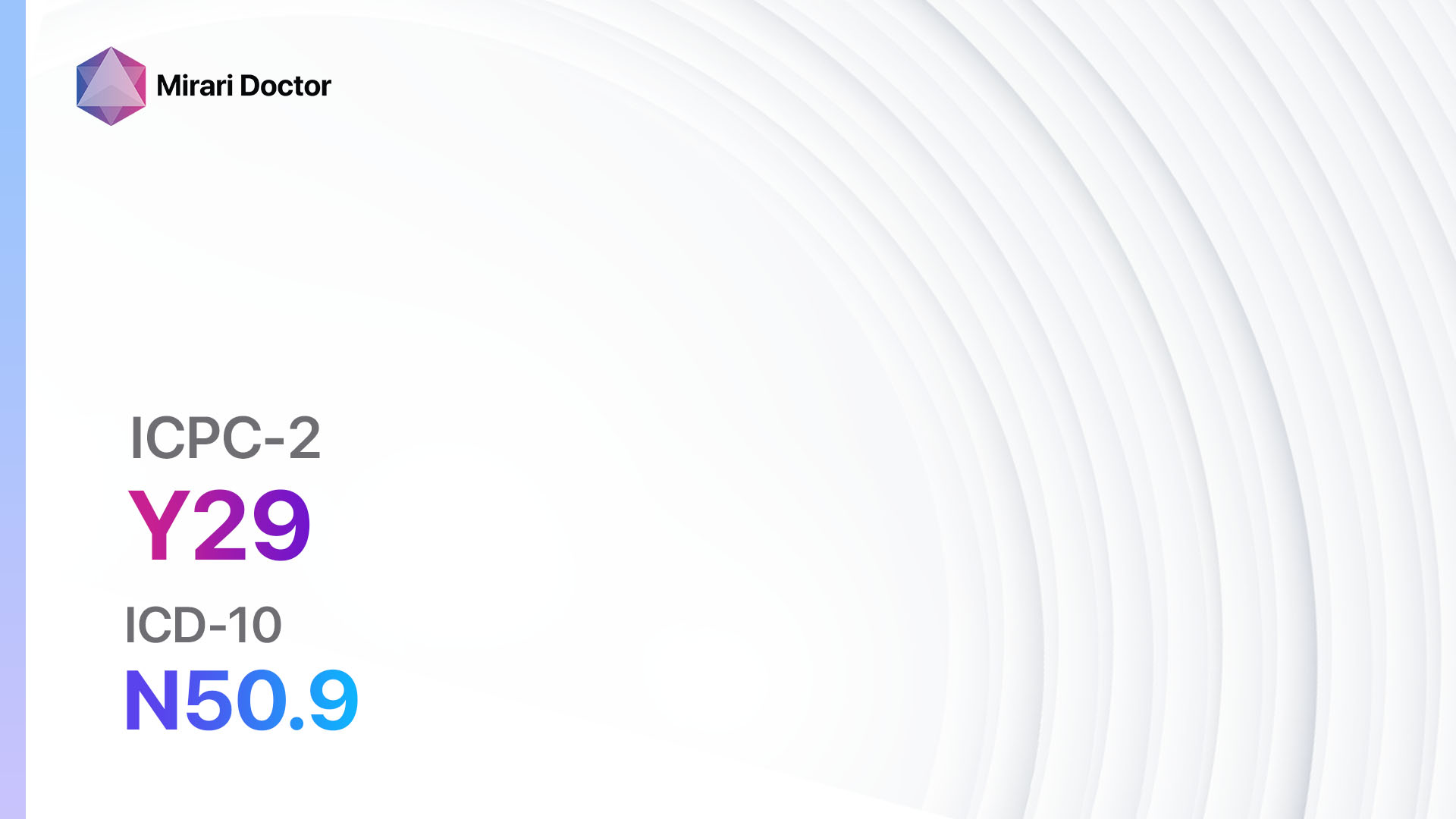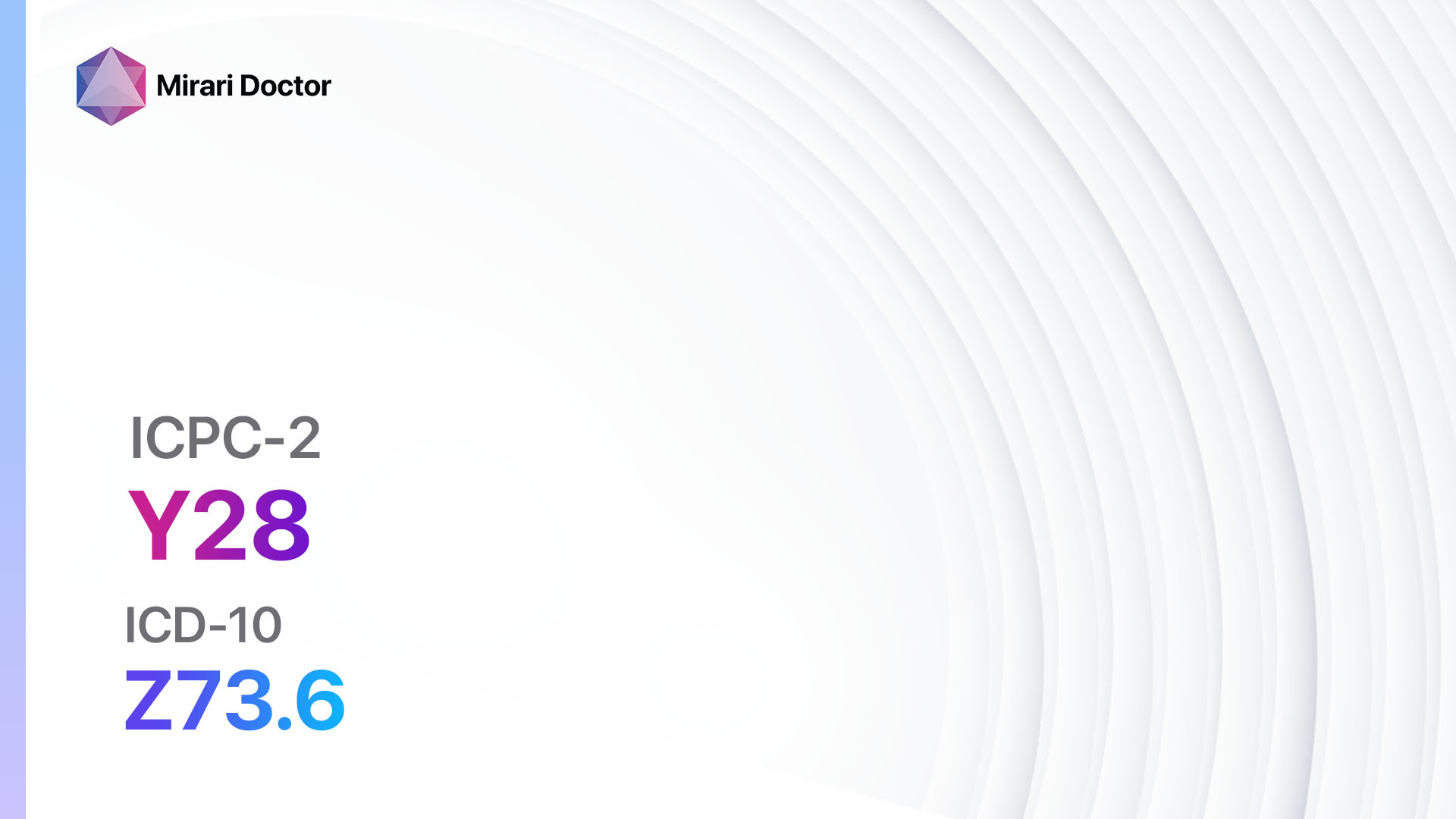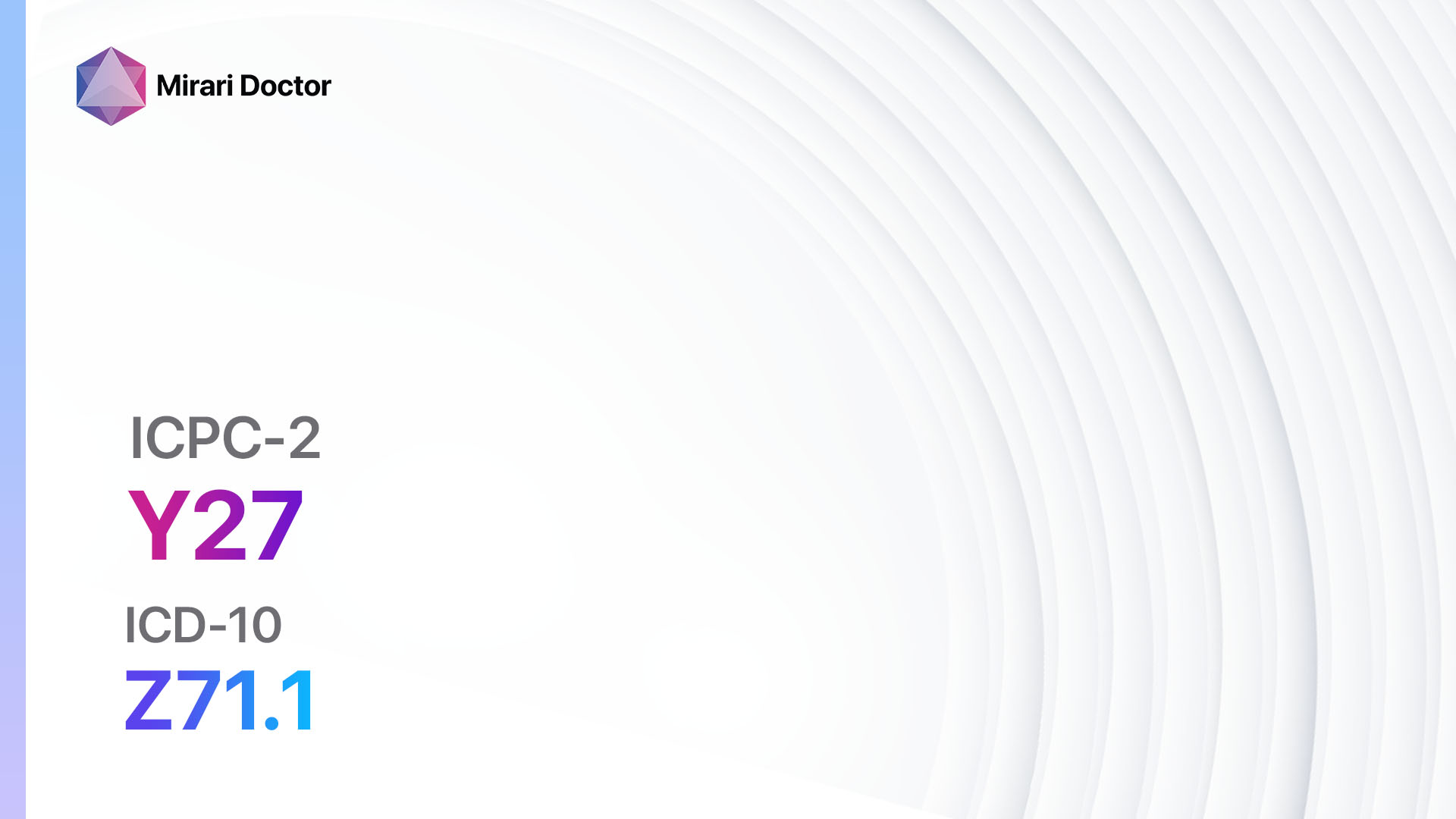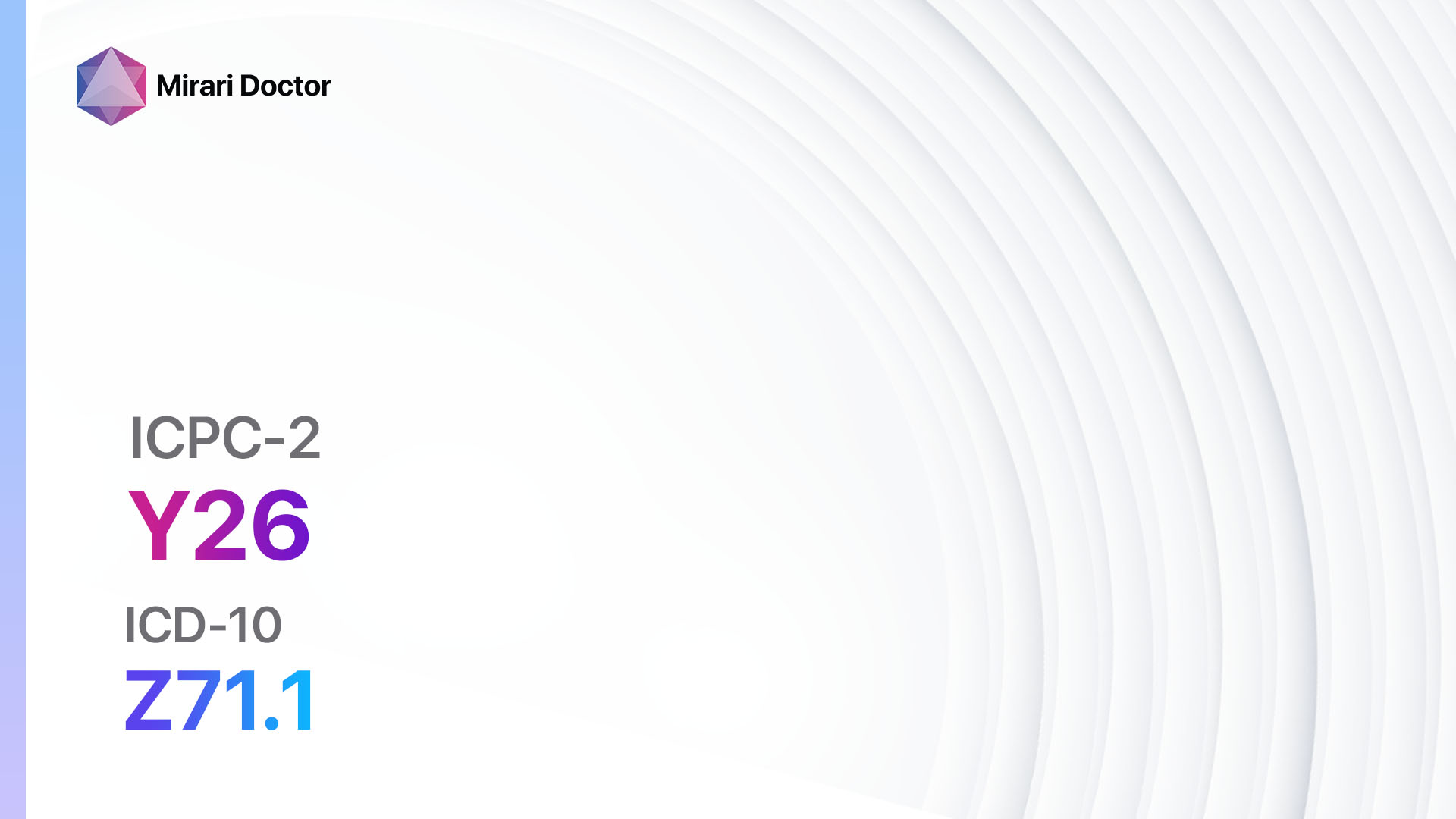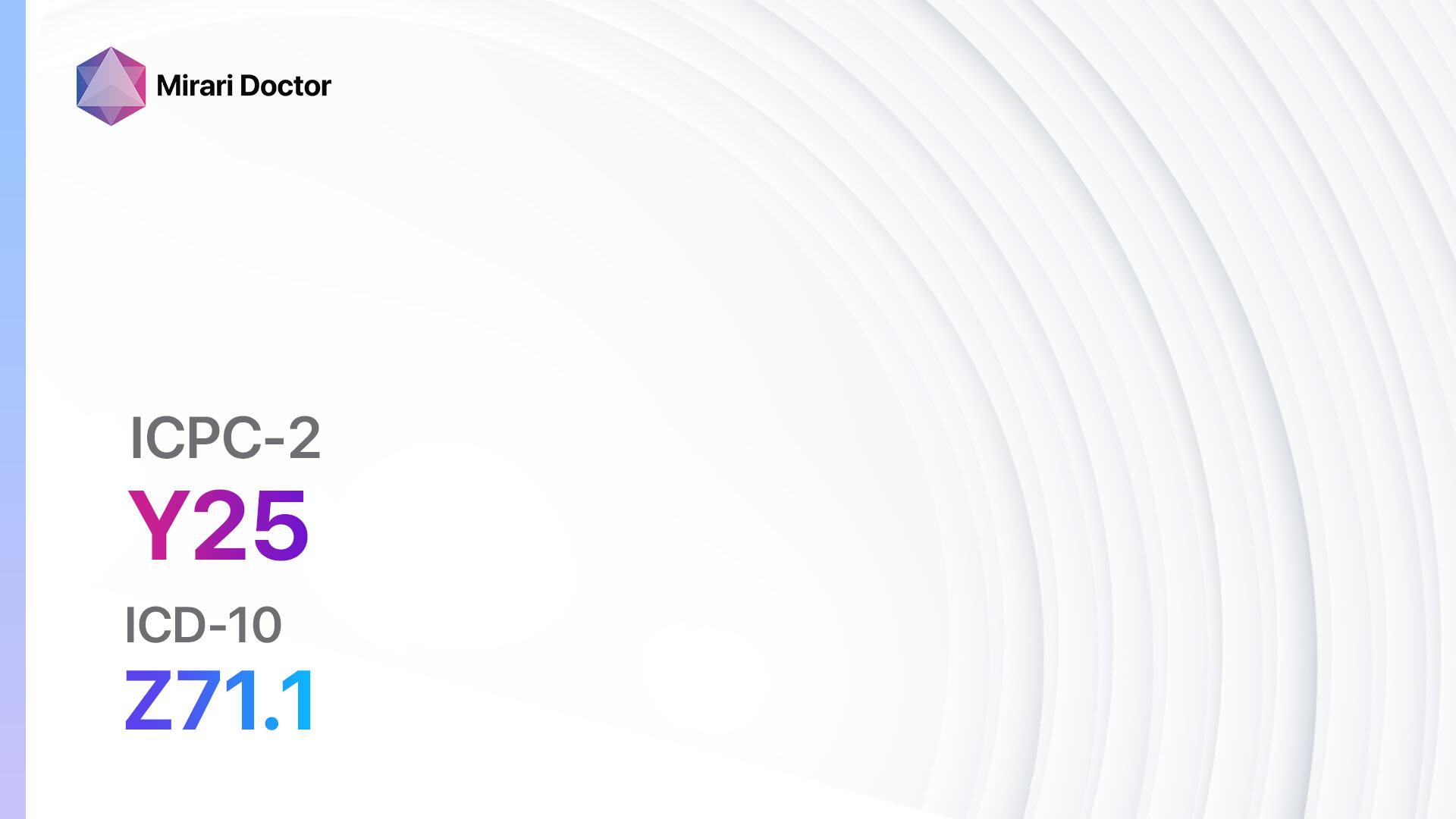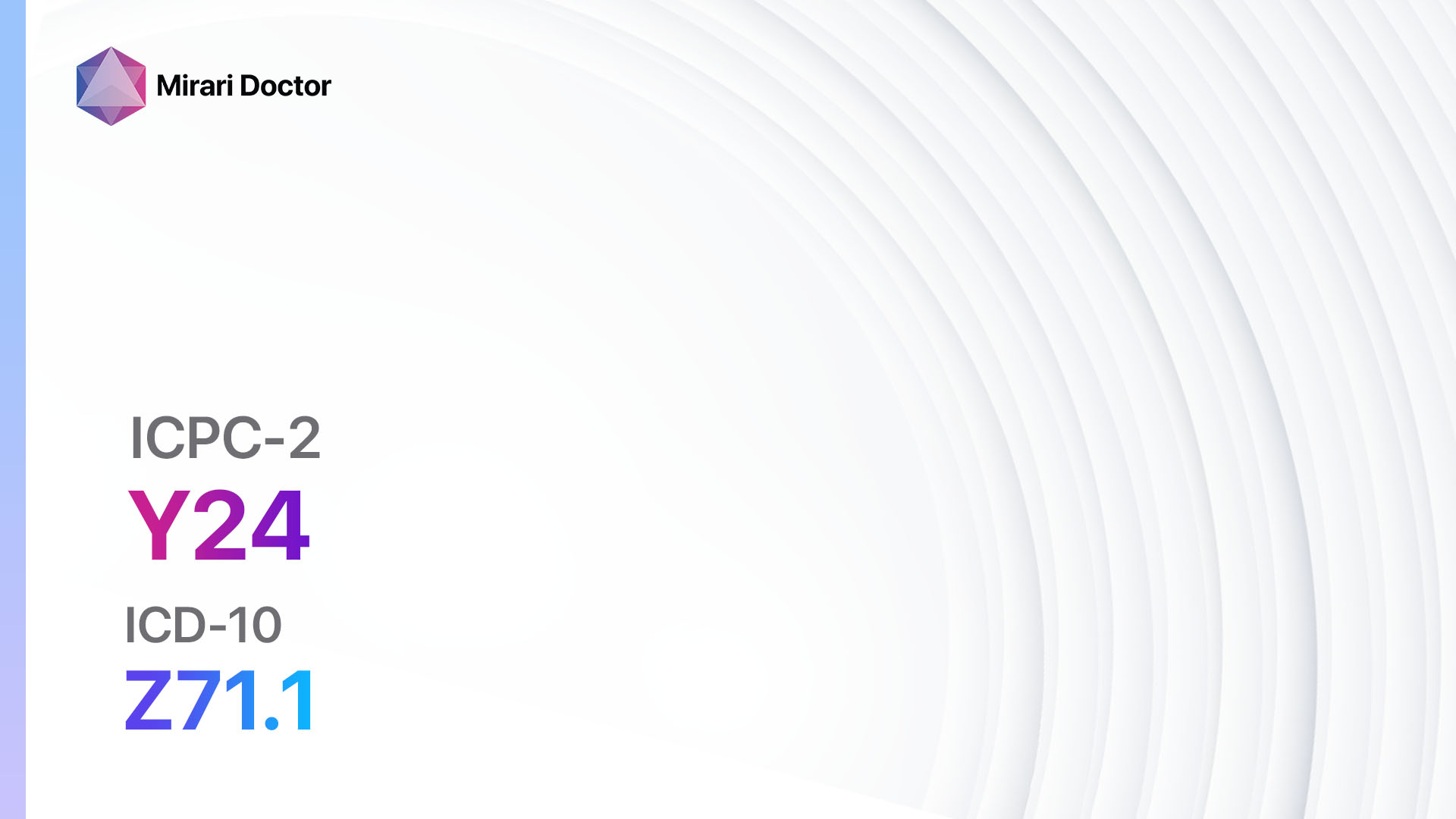
Introduction
Fear of sexual dysfunction in males is a common concern that can significantly impact a person’s quality of life and relationships[1]. This guide aims to provide healthcare professionals with a comprehensive approach to diagnosing and managing this condition.
Codes
- ICPC-2 Code: Y24 Fear of sexual dysfunction male[2]
- ICD-10 Code: Z71.1 Person with feared complaint in whom no diagnosis is made[3]
Symptoms
- Decreased libido: A noticeable decrease in sexual desire or interest.
- Erectile dysfunction: Difficulty achieving or maintaining an erection.
- Premature ejaculation: Ejaculation that occurs sooner than desired.
- Delayed ejaculation: Difficulty achieving ejaculation or a delay in ejaculation.
- Orgasmic dysfunction: Difficulty reaching orgasm or a reduced intensity of orgasms.
- Painful intercourse: Pain or discomfort during sexual intercourse.
- Anxiety or distress related to sexual performance[4].
Causes
- Psychological factors: Stress, anxiety, depression, relationship issues, past trauma, or negative sexual experiences.
- Medical conditions: Diabetes, cardiovascular disease, hormonal imbalances, neurological disorders, or chronic illnesses.
- Medications: Certain medications, such as antidepressants, antihypertensives, or prostate medications, may cause sexual dysfunction.
- Substance abuse: Excessive alcohol consumption, smoking, or illicit drug use.
- Age-related changes: Decreased testosterone levels and age-related decline in sexual function[5].
Diagnostic Steps
Medical History
- Gather detailed information about the patient’s sexual history, including the onset and duration of symptoms, any triggering factors or events, and changes in sexual function over time.
- Assess for underlying medical conditions, including diabetes, cardiovascular disease, hormonal imbalances, or neurological disorders.
- Evaluate the patient’s psychological well-being, including stress, anxiety, depression, or relationship issues.
- Inquire about medication use, substance abuse, or lifestyle factors that may contribute to sexual dysfunction.
- Assess the impact of sexual dysfunction on the patient’s overall quality of life and relationships[6].
Physical Examination
- Perform a comprehensive physical examination to assess for any physical abnormalities or signs of underlying medical conditions.
- Evaluate the patient’s cardiovascular health, including blood pressure assessment and examination for signs of cardiovascular disease.
- Assess the patient’s genitalia for any abnormalities, such as penile curvature or signs of infection.
- Evaluate the patient’s neurological function, including sensation and reflexes, to rule out any underlying neurological disorders[7].
Laboratory Tests
- Testosterone levels: Measure total and free testosterone levels to assess for hormonal imbalances.
- Blood glucose levels: Check fasting blood glucose levels to screen for diabetes.
- Lipid profile: Assess lipid levels to evaluate cardiovascular risk factors.
- Thyroid function tests: Measure thyroid-stimulating hormone (TSH) levels to rule out thyroid dysfunction.
- Prolactin levels: Elevated prolactin levels may indicate an underlying medical condition.
- Complete blood count (CBC): Evaluate for anemia or other blood disorders that may contribute to sexual dysfunction[8].
Diagnostic Imaging
- Doppler ultrasound: Assess penile blood flow to evaluate for vascular causes of erectile dysfunction.
- Magnetic resonance imaging (MRI) of the brain: May be indicated if neurological causes are suspected.
- Pelvic ultrasound: Evaluate the pelvic organs for any abnormalities or signs of infection[9].
Other Tests
- Psychological assessment: Consider referral to a psychologist or psychiatrist for a comprehensive psychological evaluation.
- Sleep study: If obstructive sleep apnea is suspected, a sleep study may be indicated.
- Nerve conduction studies: Evaluate nerve function in individuals with suspected neurological causes of sexual dysfunction[10].
Follow-up and Patient Education
- Schedule follow-up appointments to monitor the patient’s response to treatment and adjust management if necessary.
- Provide education about the condition, including the potential causes, treatment options, and lifestyle modifications that may improve sexual function.
- Encourage open communication with the patient’s partner and offer relationship counseling, if needed.
- Provide resources or referrals to support groups or specialized healthcare professionals, such as sex therapists.
Possible Interventions
Traditional Interventions
Medications:
Top 5 drugs for Fear of sexual dysfunction male:
- Phosphodiesterase-5 inhibitors (e.g., Sildenafil, Tadalafil, Vardenafil):
- Cost: $15-$50 per tablet.
- Contraindications: Concomitant use of nitrates, severe liver or kidney disease, uncontrolled hypertension.
- Side effects: Headache, flushing, nasal congestion, dyspepsia.
- Severe side effects: Priapism, sudden hearing loss, vision changes.
- Drug interactions: Alpha-blockers, nitrate medications.
- Warning: Caution in patients with cardiovascular disease.
- Testosterone replacement therapy (e.g., Testosterone gel, Testosterone injections):
- Cost: $50-$200 per month.
- Contraindications: Prostate cancer, breast cancer, severe cardiac disease.
- Side effects: Acne, fluid retention, increased hematocrit levels.
- Severe side effects: Worsening of prostate cancer, cardiovascular events.
- Drug interactions: Anticoagulants, corticosteroids.
- Warning: Monitoring of prostate-specific antigen (PSA) levels is recommended.
- Selective serotonin reuptake inhibitors (e.g., Sertraline, Paroxetine):
- Cost: $10-$50 per month.
- Contraindications: Concomitant use of monoamine oxidase inhibitors (MAOIs), known hypersensitivity.
- Side effects: Nausea, insomnia, sexual dysfunction.
- Severe side effects: Serotonin syndrome, suicidal thoughts.
- Drug interactions: MAOIs, NSAIDs.
- Warning: May take several weeks to see the full effect.
- Alpha-blockers (e.g., Tamsulosin, Alfuzosin):
- Cost: $10-$50 per month.
- Contraindications: Hypotension, severe liver or kidney disease, concomitant use of phosphodiesterase-5 inhibitors.
- Side effects: Dizziness, orthostatic hypotension, retrograde ejaculation.
- Severe side effects: Priapism, cardiovascular events.
- Drug interactions: Phosphodiesterase-5 inhibitors, antihypertensive medications.
- Warning: Caution in patients with cardiovascular disease.
- Antidepressants (e.g., Bupropion, Mirtazapine):
- Cost: $10-$50 per month.
- Contraindications: Known hypersensitivity, concomitant use of monoamine oxidase inhibitors (MAOIs).
- Side effects: Sedation, weight gain, sexual dysfunction.
- Severe side effects: Serotonin syndrome, suicidal thoughts.
- Drug interactions: MAOIs, other antidepressants.
- Warning: May take several weeks to see the full effect.
Surgical Procedures:
- Penile implants: Surgically implanted devices that allow for erections on demand. Cost: $15,000 to $50,000.
- Vascular surgery: Surgical procedures to improve blood flow to the penis. Cost: $10,000 to $30,000.
Alternative Interventions
- Acupuncture: May help improve blood flow and reduce stress. Cost: $60-$120 per session.
- Yoga and meditation: Can reduce stress and improve overall well-being. Cost: Varies depending on the facility or instructor.
- Herbal supplements: Some herbs, such as ginseng or horny goat weed, may have potential benefits for sexual function. Cost: Varies depending on the specific supplement.
- Psychotherapy: Talk therapy can help address underlying psychological factors contributing to sexual dysfunction. Cost: Varies depending on the therapist and duration of therapy.
- Lifestyle modifications: Regular exercise, healthy diet, and stress management techniques can improve overall sexual health. Cost: Varies depending on individual choices and preferences.
Lifestyle Interventions
- Regular exercise: Engaging in physical activity can improve blood flow and enhance sexual function. Cost: Varies depending on individual choices and preferences.
- Healthy diet: Consuming a balanced diet rich in fruits, vegetables, lean proteins, and whole grains can improve overall sexual health. Cost: Varies depending on individual choices and preferences.
- Stress management: Techniques such as mindfulness, deep breathing exercises, or engaging in hobbies can reduce stress and improve sexual function. Cost: Varies depending on individual choices and preferences.
- Limiting alcohol consumption: Excessive alcohol intake can contribute to sexual dysfunction. Cost: Varies depending on individual choices and preferences.
- Smoking cessation: Quitting smoking can improve overall cardiovascular health and enhance sexual function. Cost: Varies depending on individual choices and preferences.
It is important to note that the cost ranges provided are approximate and may vary depending on the location and availability of the interventions. It is recommended to consult with a healthcare professional or pharmacist for specific cost information and to discuss the most appropriate interventions for individual patients.
Mirari Cold Plasma Alternative Intervention
Understanding Mirari Cold Plasma
- Safe and Non-Invasive Treatment: Mirari Cold Plasma is a safe and non-invasive treatment option for various skin conditions. It does not require incisions, minimizing the risk of scarring, bleeding, or tissue damage.
- Efficient Extraction of Foreign Bodies: Mirari Cold Plasma facilitates the removal of foreign bodies from the skin by degrading and dissociating organic matter, allowing easier access and extraction.
- Pain Reduction and Comfort: Mirari Cold Plasma has a local analgesic effect, providing pain relief during the treatment, making it more comfortable for the patient.
- Reduced Risk of Infection: Mirari Cold Plasma has antimicrobial properties, effectively killing bacteria and reducing the risk of infection.
- Accelerated Healing and Minimal Scarring: Mirari Cold Plasma stimulates wound healing and tissue regeneration, reducing healing time and minimizing the formation of scars.
Mirari Cold Plasma Prescription
Video instructions for using Mirari Cold Plasma Device – Y24 Fear of sexual dysfunction male (ICD-10:Z71.1)
| Mild | Moderate | Severe |
| Mode setting: 1 (Infection) Location: 0 (Localized) Morning: 15 minutes, Evening: 15 minutes |
Mode setting: 1 (Infection) Location: 0 (Localized) Morning: 30 minutes, Lunch: 30 minutes, Evening: 30 minutes |
Mode setting: 1 (Infection) Location: 0 (Localized) Morning: 30 minutes, Lunch: 30 minutes, Evening: 30 minutes |
| Mode setting: 2 (Wound Healing) Location: 0 (Localized) Morning: 15 minutes, Evening: 15 minutes |
Mode setting: 2 (Wound Healing) Location: 0 (Localized) Morning: 30 minutes, Lunch: 30 minutes, Evening: 30 minutes |
Mode setting: 2 (Wound Healing) Location: 0 (Localized) Morning: 30 minutes, Lunch: 30 minutes, Evening: 30 minutes |
| Mode setting: 5 (Prostatitis Therapy) Location: 2 (Prostate & Uterus) Morning: 15 minutes, Evening: 15 minutes |
Mode setting: 5 (Prostatitis Therapy) Location: 2 (Prostate & Uterus) Morning: 30 minutes, Lunch: 30 minutes, Evening: 30 minutes |
Mode setting: 5 (Prostatitis Therapy) Location: 2 (Prostate & Uterus) Morning: 30 minutes, Lunch: 30 minutes, Evening: 30 minutes |
| Mode setting: 7 (Immunotherapy) Location: 1 (Sacrum) Morning: 15 minutes, Evening: 15 minutes |
Mode setting: 7 (Immunotherapy) Location: 1 (Sacrum) Morning: 30 minutes, Lunch: 30 minutes, Evening: 30 minutes |
Mode setting: 7 (Immunotherapy) Location: 1 (Sacrum) Morning: 30 minutes, Lunch: 30 minutes, Evening: 30 minutes |
| Total Morning: 60 minutes approx. $10 USD, Evening: 60 minutes approx. $10 USD |
Total Morning: 120 minutes approx. $20 USD, Lunch: 120 minutes approx. $20 USD, Evening: 120 minutes approx. $20 USD, |
Total Morning: 120 minutes approx. $20 USD, Lunch: 120 minutes approx. $20 USD, Evening: 120 minutes approx. $20 USD, |
| Usual treatment for 7-60 days approx. $140 USD – $1200 USD | Usual treatment for 6-8 weeks approx. $2,520 USD – $3,360 USD |
Usual treatment for 3-6 months approx. $5,400 USD – $10,800 USD
|
 |
|
Use the Mirari Cold Plasma device to treat Fear of sexual dysfunction male effectively.
WARNING: MIRARI COLD PLASMA IS DESIGNED FOR THE HUMAN BODY WITHOUT ANY ARTIFICIAL OR THIRD PARTY PRODUCTS. USE OF OTHER PRODUCTS IN COMBINATION WITH MIRARI COLD PLASMA MAY CAUSE UNPREDICTABLE EFFECTS, HARM OR INJURY. PLEASE CONSULT A MEDICAL PROFESSIONAL BEFORE COMBINING ANY OTHER PRODUCTS WITH USE OF MIRARI.
Step 1: Cleanse the Skin
- Start by cleaning the affected area of the skin with a gentle cleanser or mild soap and water. Gently pat the area dry with a clean towel.
Step 2: Prepare the Mirari Cold Plasma device
- Ensure that the Mirari Cold Plasma device is fully charged or has fresh batteries as per the manufacturer’s instructions. Make sure the device is clean and in good working condition.
- Switch on the Mirari device using the power button or by following the specific instructions provided with the device.
- Some Mirari devices may have adjustable settings for intensity or treatment duration. Follow the manufacturer’s instructions to select the appropriate settings based on your needs and the recommended guidelines.
Step 3: Apply the Device
- Place the Mirari device in direct contact with the affected area of the skin. Gently glide or hold the device over the skin surface, ensuring even coverage of the area experiencing.
- Slowly move the Mirari device in a circular motion or follow a specific pattern as indicated in the user manual. This helps ensure thorough treatment coverage.
Step 4: Monitor and Assess:
- Keep track of your progress and evaluate the effectiveness of the Mirari device in managing your Fear of sexual dysfunction male. If you have any concerns or notice any adverse reactions, consult with your health care professional.
Note
This guide is for informational purposes only and should not replace the advice of a medical professional. Always consult with your healthcare provider or a qualified medical professional for personal advice, diagnosis, or treatment. Do not solely rely on the information presented here for decisions about your health. Use of this information is at your own risk. The authors of this guide, nor any associated entities or platforms, are not responsible for any potential adverse effects or outcomes based on the content.
Mirari Cold Plasma System Disclaimer
- Purpose: The Mirari Cold Plasma System is a Class 2 medical device designed for use by trained healthcare professionals. It is registered for use in Thailand and Vietnam. It is not intended for use outside of these locations.
- Informational Use: The content and information provided with the device are for educational and informational purposes only. They are not a substitute for professional medical advice or care.
- Variable Outcomes: While the device is approved for specific uses, individual outcomes can differ. We do not assert or guarantee specific medical outcomes.
- Consultation: Prior to utilizing the device or making decisions based on its content, it is essential to consult with a Certified Mirari Tele-Therapist and your medical healthcare provider regarding specific protocols.
- Liability: By using this device, users are acknowledging and accepting all potential risks. Neither the manufacturer nor the distributor will be held accountable for any adverse reactions, injuries, or damages stemming from its use.
- Geographical Availability: This device has received approval for designated purposes by the Thai and Vietnam FDA. As of now, outside of Thailand and Vietnam, the Mirari Cold Plasma System is not available for purchase or use.
References
- McCabe MP, Sharlip ID, Lewis R, et al. Incidence and prevalence of sexual dysfunction in women and men: a consensus statement from the Fourth International Consultation on Sexual Medicine 2015. J Sex Med. 2016;13(2):144-152.
- World Organization of Family Doctors (WONCA). International Classification of Primary Care, Second edition (ICPC-2). Oxford University Press, 1998.
- World Health Organization. International Statistical Classification of Diseases and Related Health Problems, 10th Revision (ICD-10). Geneva: WHO, 2019.
- Shamloul R, Ghanem H. Erectile dysfunction. Lancet. 2013;381(9861):153-165.
- Wampler SM, Llanes M. Common scrotal and testicular problems. Prim Care. 2010;37(3):613-626.
- Hatzimouratidis K, Giuliano F, Moncada I, et al. EAU guidelines on erectile dysfunction, premature ejaculation, penile curvature and priapism. Eur Urol. 2016;70(2):e1-e17.
- Bhasin S, Cunningham GR, Hayes FJ, et al. Testosterone therapy in men with androgen deficiency syndromes: an Endocrine Society clinical practice guideline. J Clin Endocrinol Metab. 2010;95(6):2536-2559.
- Burnett AL, Nehra A, Breau RH, et al. Erectile Dysfunction: AUA Guideline. J Urol. 2018;200(3):633-641.
- Cokkinos DD, Antypa E, Tserotas P, et al. Emergency ultrasound of the scrotum: A review of the commonest pathologic conditions. Curr Probl Diagn Radiol. 2011;40(1):1-14.
- Rosen RC, Riley A, Wagner G, Osterloh IH, Kirkpatrick J, Mishra A. The international index of erectile function (IIEF): a multidimensional scale for assessment of erectile dysfunction. Urology. 1997;49(6):822-830.
Related articles
Made in USA



